2024 Annual Summit
2024 ITVMO Annual Summit
Revolutionizing Government Acquisitions through Digital Transformation: Uniting Technology, People, and Processes to radically transform Federal IT Acquisitions
ITVMO Annual Summit Overview
The IT Vendor Management Office (ITVMO) in collaboration with ACT-IAC
is hosting its Second Annual ITVMO Summit, on June 11th, 2024.
The Summit brings together government and industry to share insights,
cutting-edge innovations, and evolving technological standards that
will transform the Federal Acquisition Ecosystem.
This year’s Summit will focus on uniting technology, people, and
processes to radically transform Federal IT acquisitions. Through
engaging discussions, interactive sessions, and expert panels,
attendees will explore innovative strategies and best practices for
leveraging digital transformation to drive efficiency, agility, and
effectiveness in government procurement processes. From harnessing the
power of emerging technologies to reimagining workforce capabilities
and optimizing procurement processes, this conference will offer
valuable insights and actionable solutions for revolutionizing
government acquisitions in the digital age. This collaborative forum
is dedicated to leveraging new technologies in advancing strategic
effectiveness and operational efficiency in government digital
transformation.
Session
Government Transformation | Technology
Equipping government buyers with technology practices to innovate acquisition and operations
In today's rapidly evolving digital landscape, emerging technologies such as Artificial Intelligence (AI) and Machine Learning (ML) are reshaping how agencies meet their mission. This panel discussion will explore the profound implications of these technologies on government operations and procurement practices.
Tools & Resources
Trends and Frameworks

2024 Critical and Emerging Technologies - The "Critical and Emerging Technologies List 2024 Update" released by the White House outlines the key technological areas that are vital for the United States' national security and economic prosperity. This updated list identifies critical sectors such as artificial intelligence, biotechnology, quantum computing, advanced materials, and autonomous systems, among others

Federal Regulation of Emerging Technologies - This report examines the regulatory challenges posed by emerging technologies like drones and AI-enabled medical devices. It highlights the need for federal agencies to enhance coordination and legislative clarity in selected federal agencies—the Department of Transportation (DOT), the Federal Communications Commission (FCC), and the Food and Drug Administration (FDA).

FEDRAMP Emerging Technologies Prioritization Framework - Outlines the process for identifying and prioritizing emerging technologies for federal cloud services. This framework aims to ensure that new technologies are securely integrated into the federal IT environment, aligning with national security and operational priorities. The document is open for public comment to gather feedback and improve its effectiveness.
AI, RPA & Automation

President Biden Issues Executive Order on Safe, Secure, and Trustworthy Artificial Intelligence - The Executive Order establishes new standards for AI safety and security, protects Americans’ privacy, advances equity and civil rights, stands up for consumers and workers, promotes innovation and competition, advances American leadership around the world, and more.

OMB Policy to Advance Governance, Innovation, and Risk Management in Federal Agencies’ Use of Artificial Intelligence - This policy mandates federal agencies to implement safeguards by December 1, 2024, for AI applications that could impact Americans' rights or safety, covering areas such as health, education, employment, and housing. These safeguards aim to ensure responsible AI use, including algorithmic fairness, transparency, and human oversight in critical decision-making processes.

Generative AI and Specialized Computing Infrastructure Acquisition Resource Guide - This resource guide is primarily meant to assist the acquisition workforce in navigating the complexities of acquiring Generative AI technologies in collaboration with relevant agency officials from other domains.

AI.gov: The Government is Using AI to Better Serve the Public - The United States stands to benefit significantly from harnessing the opportunities of AI to improve government services. The federal government is leveraging AI to better serve the public across a wide array of use cases, including in healthcare, transportation, the environment, and benefits delivery.

Generative AI and Specialized Computing Infrastructure Acquisition Resource Guide - Artificial Intelligence or “AI” is one of the most profound technological shifts in a generation or more. At its roots, AI is software. That means it follows many of the same acquisition policies and rules as other software and IT. Contracting officials should consider cybersecurity, supply chain risk management, data governance and other standards and guidelines when procuring Generative AI just as they would with other IT procurements.

CISA’s Roadmap for Artificial Intelligence - The Cybersecurity & Infrastructure Security Agency (CISA) addresses artificial intelligence (AI) security, emphasizing the need for AI to be secure by design. CISA's Roadmap for Artificial Intelligence outlines a whole-agency approach to promote AI's beneficial uses in cybersecurity, protect AI systems from cyber threats, and prevent the malicious use of AI against critical infrastructure.

NIST Trustworthy and Responsible AI Resource Center - The National Institute of Standards and Technology (NIST) is dedicated to fostering confidence in the creation, deployment, management, and use of Artificial Intelligence (AI) technologies and systems.

Responsible AI Toolkit - The Responsible AI (RAI) Toolkit, developed by the Chief Digital and Artificial Intelligence Office (CDAO), is designed to align AI projects with the Department of Defense's (DoD) AI Ethical Principles and best practices.

Guide to Robotic Process Automation - To serve as a guiding reference tool for federal agencies, the playbook covers both program management and technology management strategies for RPA programs at all levels.
CyberSecurity & Zero Trust

EO Policy Reference Card: Improving Nation’s Cybersecurity - This reference card provides a series of quick links to policies, programs, and tools to help agencies and participants in the federal IT marketplace comply with governing policies related to cybersecurity.

ZeroTrust Strategy Buyer’s Guide - This guide is intended to assist agencies under the United States (U.S.) Department of Defense (DoD) with acquiring products, services, and solutions to support and align with the DoD Zero Trust (ZT) Strategy. General Services Administration (GSA) fully recognizes that the starting point for implementing a ZT Strategy will vary among the DoD Components depending on maturity level.

Zero Trust Architecture Buyer’s Guide - This third version of the Zero Trust Architecture (ZTA) Buyer’s Guide aims to assist federal agencies in acquiring products, services, and solutions that align with the Federal Zero Trust Strategy and enable the implementation of robust security measures across the critical infrastructure sectors.

Zero Trust and Improving the Nation's Cybersecurity - In May 2021, the Biden Administration issued an executive order aimed at enhancing the nation's cybersecurity. Executive Order (EO) 14028 mandates a significant shift in how the US federal government approaches cybersecurity. A key pillar of this initiative is the adoption of a Zero Trust security model.

CISA’s Best Practices - Cyberspace is particularly difficult to secure due to a number of factors: the ability of malicious actors to operate from anywhere in the world, the linkages between cyberspace and physical systems, and the difficulty of reducing vulnerabilities and consequences in complex cyber networks. Implementing safe cybersecurity best practices is important for individuals as well as organizations of all sizes.

M-22-09 Federal Zero Trust Strategy - This memorandum sets forth a Federal zero trust architecture (ZTA) strategy, requiring agencies to meet specific cybersecurity standards and objectives by the end of Fiscal Year (FY) 2024 in order to reinforce the Government’s defenses against increasingly sophisticated and persistent threat campaigns.

CISA’s Zero Trust Maturity Model - CISA’s Zero Trust Maturity Model is one of many roadmaps that agencies can reference as they transition towards a zero trust architecture. The maturity model aims to assist agencies in the development of zero trust strategies and implementation plans and to present ways in which various CISA services can support zero trust solutions across agencies.
Cloud and Infrastructure

Cloud and Infrastructure Community Guides & Resources - IT modernization is a key component of the Federal Government’s ability to leverage American innovation through the increased use of commercial technology. This website provides resources for federal agencies to consolidate and modernize their IT infrastructure.

FinOps - Agency Case Study: U.S. Army - CAMO - In 2019, the U.S. Army stood up the EnterpriseCloudManagementAgency (ECMA) to kickstart cloud migration. ECMA identified and satisfied the requirement for a prototype process to help the Army effectively plan, budget, and consume commercial cloud services.

Cloud Acquisition Guide - This guide is specific to Infrastructure as a Service (IaaS) and is intended to aid acquisition professionals with a novice to intermediate knowledge of IaaS procurement as it relates to Cloud Service Providers (CSP). The guide is intended to increase awareness of nuances in infrastructure acquisition and to be a complement to other cloud acquisition resources.

Cloud Information Center - The CIC is designed to educate on all aspects of the acquisition lifecycle, including business, technical, and contractual aspects of cloud solutions.

Cloud and Infrastructure Community of Practice - IT modernization is a key component of the Federal Government’s ability to leverage American innovation through the increased use of commercial technology. The DCCOI PMO provides resources for federal agencies to consolidate and modernize their IT infrastructure.

Harnessing Blockchain in the Federal Government - This report examines blockchain’s challenges and opportunities and highlights key considerations for implementing a blockchain. Such considerations address the areas of information technology, federal financial management, human capital, and oversight.
Government Transformation | Processes
Strengthening contract approaches and leveraging data to improve the efficiency and effectiveness of IT acquisitions.
This panel will discuss the BCI and related initiatives and how the initiatives are working to reengineer and improve acquisition processes to avoid agency waste and secure the best value for the government. Hear how gov/industry collaborations are driving these improvements and what’s coming in Fiscal 2025.
Tools & Resources
Process

Better Contracting Initiative - FACT SHEET: Biden-Harris Administration Announces New Better Contracting Initiative to Save Billions Annually. The BCI is a four-pronged initiative to ensure that the Federal Government is getting better terms and prices when purchasing goods and services.

Contract Data Elements Guide - This guide was developed to enable consistency and enhance data for agencies as they draft contracts for IT spending.

Data How To: FedRAMP Cloud Providers - FedRAMP standardizes security requirements for the authorization and ongoing cybersecurity of cloud services in accordance with FISMA , OMB Circular A-130 , and FedRAMP policy. This one pager provides guide finding businesses that have been FedRamp certified.

Data How To: Agency Spend on Common IT Products - This guide is intended for an agency preparing to make a purchase and wanting a comparison of what other organizations within the government paid for similar services or products.

Data How To: Cybersecurity Budget Planning - This guide is intended to assist agencies in finding security and compliance related obligations while also viewing other agencies contract details for similar products and services.

Digital Dashboard - Government-wide compliance with OMB directives and conformance to best practices and industry standards.

Federal Software Licenses: Agencies Need to Take Action to Achieve Additional Savings - GAO reviewed the 24 Chief Financial Officers Act of 1990 agencies’ self reported data on their five most widely used and highest amounts paid for software licenses. GAO then ranked these by the number of instances agencies cited specific vendors and products across the government.

GAO's Work to Leverage Technology and Ensure Responsible Use - This U.S. The Government Accountability Office (GAO) report discusses how GAO is leveraging Artificial Intelligence (AI) internally to improve efficiency, effectiveness, and depth of its work for Congress and taxpayers.

Federal Software Licenses: Agencies Need to Take Action to Achieve Additional Savings - GAO has put forward 18 recommendations for nine agencies, urging them to meticulously track software license usage and align their inventories with the licenses purchased.

Fact Sheet: Circular A-137, Strategic Management of Acquisition Data and Information Summary - OMB Circular A-137 outlines a strategic approach to managing acquisition data and information, emphasizing the importance of accurate, timely, and comprehensive data to enhance decision-making and accountability.

The Biden-Harris Administration Launches the Federal Program Inventory to Make Federal Spending More Transparent and Accessible - The Biden-Harris Administration, through the Office of Management and Budget (OMB), has launched the Federal Program Inventory (FPI), a new tool aimed at enhancing transparency and accessibility of federal spending.
Government Transformation | People
Developing an inclusive and equitable technology talent pipeline that enables the government to solve our toughest challenges
The Federal government is the Nation’s largest employer with more than 2.1 million civilian employees and over 4.1 million federal contractors. People are the backbone of our operations. Listen to how the government is using DEIA best practices, dynamic training approaches, and small businesses to maximize our talent pools in new and unconventional ways that increase operational efficiency.
Tools & Resources
People

IT Buyers Community of Practice - The IT Buyers Community of Practice (ITB CoP) is chartered under the CIO Council’s Enterprise Operations Committee (E-ops), The purpose of the ITB CoP is to create a community of federal IT buyers to share their experience and scale expertise across government. The ITB CoP brings together the acquisition programs at agencies, contract vehicle programs, and procurement specialists from across government to solve common challenges.

Connect.gov - As a federal community of practice, we work better together. The baton has been passed from MAX to Connect to carry forward and enhance a legacy of established, collaborative partnerships.

Acquisition Gateway - The official online platform for government acquisition programs, policies, initiatives and tools. Connecting acquisition professionals and federal buyers with the information and resources to improve acquisition government-wide.

Hi-Def Initiative - The Hi-Def Initiative is a government-wide effort to promote Hi-Definition (Hi-Def) acquisitions by enabling agencies to leverage government-wide acquisition data that is relevant, easily accessed, and available at the time of need. This will help agencies more efficiently and effectively acquire products and services as well as gain key acquisition insights.

OMB Releases Digital Accessibility Guidance to Ensure All Americans Have Ability to Access Critical Government Resources - The White House's Office of Management and Budget has released new digital accessibility guidance to ensure all Americans, including those with disabilities, can access critical government resources. This initiative is a response to the fact that nearly half of the most popular federal government websites were not fully accessible.

Government-wide Hiring Authorities for Advancing Federal Government Use of Artificial Intelligence (AI) - This document from The U.S. Office of Personnel Management outlines new hiring authorities for advancing the federal government's use of Artificial Intelligence (AI).

AbilityOne Program - The AbilityOne Program is among the nation’s largest providers of jobs for people who are blind or have significant disabilities.
Government Transformation | Partners
Discover the untapped potential of partnerships in government procurement as we shine a spotlight on the role and relationships of OEMs and Value Added Resellers (VARs).
Tools & Resources
Offices of Small Business Utilization (OSDBUs)
Gain insight into agency IT forecasts and upcoming opportunities from representatives of various agency OSDBUs.

Category Management Supports Equity in Procurement - The President's Management Agenda (PMA) highly regards Category Management (CM) initiatives, the current PMA emphasizes Best-in-Class solutions and aligns with CM principles to enhance the federal acquisition system. It sets forth key performance indicators like cost avoidance and spend under management to monitor progress.

ITVMO Small Business Page - The ITVMO boosts small business utilization and participation in the Federal IT marketplace by promoting best practices to improve small businesses access to government contracting and agency identification of where to use small businesses to achieve their mission goals.

Frequently Asked Questions for Contractors and BIC Solution Owners - These FAQs are intended to help small businesses and BIC owners better navigate working together.

FY2023 Small Business Procurement Scorecard - The annual Scorecard evaluates federal agencies on their achievement of small business and socio-economic contracting goals, including prime and subcontracting targets. These goals encompass small businesses, women-owned, disadvantaged businesses, service-disabled veteran-owned businesses, and those in Historically Underutilized Business Zones (HUBZones).

Increasing Small Business Participation on Multiple-Award Contracts - Details new policies to boost small business participation in government procurement through Multiple Award Contracts (MACs) and Category Management Acquisition Tools (CATs). This initiative aims to ensure small businesses have fair access to federal contracting opportunities, promoting economic diversity and enhancing competition within federal acquisitions. It outlines specific steps to implement these changes, reflecting a commitment to economic inclusivity and the growth of small enterprises within the national economy.

SBA's Contracting Guide for Small Businesses - The federal government contracts with small businesses to buy products and services. This page provides access to several resources, tools, and guidance reports to help small businesses navigate the Federal Marketplace.
Quality Service Management Offices (QSMOs)
Explore the benefits of QSMO's standardized, efficient, and collaborative IT solutions, contributing to a more effective and future-ready government.

Quality Service Management Offices (QSMOs) Shared Services - OMB is designating specific agencies to stand up QSMOs for select mission support functions. Designated QSMOs serve as governmentwide storefronts, offering multiple solutions for technology and services in their functional area.

Cyber QSMO - The Cybersecurity and Infrastructure Security Agency’s (CISA) Cybersecurity Quality Services Management Office (Cyber QSMO) program will be the storefront for cybersecurity products and services for the U.S. Government and potentially beyond.
Original Equipment Manufacturers (OEMs)
Connect and network with our IT OEMs and VARs to learn more about their leading products and services, innovating how the government operates today and tomorrow.

OEM & Acquisition Initiatives - The ITVMO provides thought leadership, consulting, and research services in IT policy, acquisitions, technology adoption, and data analytics to increase acquisition efficiencies, strengthen procurement strategies, facilitate knowledge sharing, and deliver best practices and lessons learned across government.

How Original Equipment Manufacturer (OEM) Operate - This training resource provides an 8-part information series on OEM operating practices to educate agency IT buyers and help them achieve a stronger negotiating position.

A Guide to Identifying Spend by OEM and Vendor - Acquisition Analytics is a Category Management resource that provides a variety of detail on OEMs, vendors, prices and more.
IT Best in Class Vehicles (IT BICs)
Learn how key IT BIC vehicles serve as a pipeline for businesses and how agency buyers can leverage the vehicles to avoid cost burden, gain efficiencies, and secure, compliant emerging technologies.

ITVMO IT Best-in-Class Vehicle Page - The ITVMO works with the Federal Acquisition Programs to amplify IT Best-in-Class solution success to improve spend under management and increase market equity and compliance. Best-in-class (BIC) is a government-wide designation for acquisition solutions that can be used by multiple agencies and that satisfy key criteria defined by the White House Office of Management and Budget.

Understanding the Best-in-Class (BIC) Process and Criteria - Understanding the Best-in-Class (BIC) process and criteria involves recognizing the highest standard practices and benchmarks used to evaluate and identify the most efficient and effective products, services, or solutions for the Federal Government.

Frequently Asked Questions for Contractors - This FAQ is intended to assist small businesses with finding contracting opportunities with the IT BIC vehicles and increase the number of small businesses in the federal IT marketplace.

Frequently Asked Questions for BIC Owners - This FAQ is intended to help IT BIC Solution Owners continue to meet and exceed the Government-wide IT Category Key Performance Indicator (KPI) Small Business (SB) utilization goal of 39%.
Speakers

Laura Stanton
Assistant Commissioner, Office of ITC, GSA

Jason Miller
Deputy Director for Management, OMB

Samantha Hubner
AI Policy Advisor, OMB
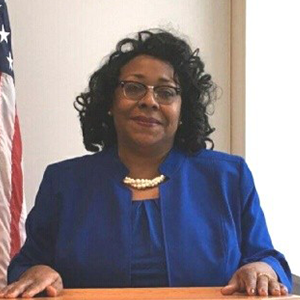
Bea Dukes
Career Manager and Strategic Acquisition Workforce Advisor, GSA

John Radziszewski
Director, ITVMO
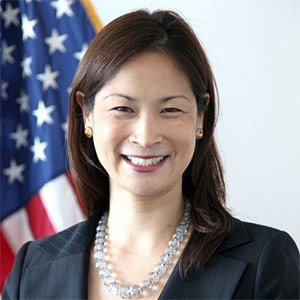
Christine Harada
Senior Advisor, OFPP
Agenda
Revolutionizing Federal Acquisitions through Digital Transformation
| Time | Topics |
|---|---|
|
|
|
|
|
|
|
|
|
|
|
|
|
|
|
|
|
|
|
|
|
|
|
|
|
|
|
|
|
|
|
|
|
|
|
|
|
|
|
|
|
|
Panelists

Shweta Mulcare
Director of Data Science Futures and AI Strategist, SAIC

Udaya Patnaik
Chief Innovation Officer, Federal Acquisition Service Office of Information Technology Category (ITC), GSA

Leigh Anne Giraldi
Associate CIO for Business Management, NASA

Joanie Newhart
Associate Administrator, Acquisition Workforce Programs, Office of Management and Budget
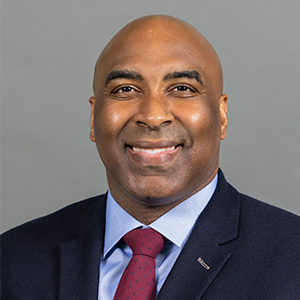
Charles (Chuck) Barber
Chief DEI Officer, National Science Foundation

Shelly Hartsook
Deputy Associate Director Capacity Building, Cybersecurity and Infrastructure Security Agency
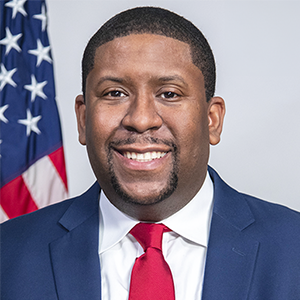
Exodie Roe
Associate Administrator, OSDUBU General Services Administration

Jeff Koses
Senior Procurement Executive U.S. General Services Administration

Lesley Field
Deputy Administrator for Federal Procurement Policy, Office of Management and Budget
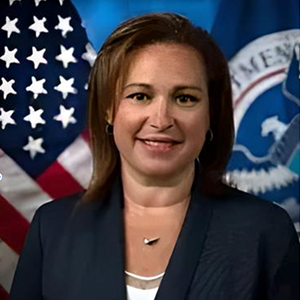
Jaclyn Rubino
Executive Director, Strategic Programs Division, Department of Homeland Security

Corey Rooney
Director Partner Business Development, Carasoft

Joel A. Lipkin
Chief Operating Officer, Four Points Technology
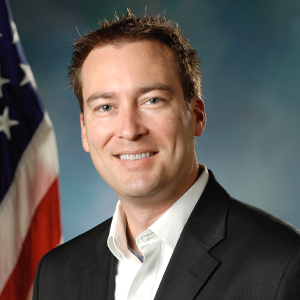
Bob Nicholson
Director of Business Development, Dell
Don’t see what you’re looking for?
If your question is not addressed in the above sections, please email us
at:
itvmo@gsa.gov
and we will get back to you with an answer..


